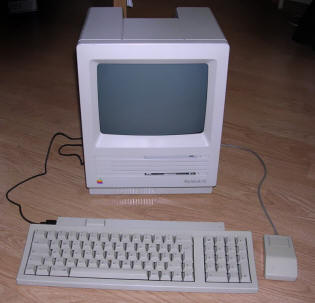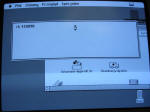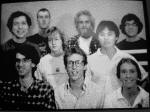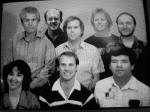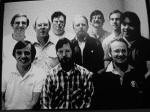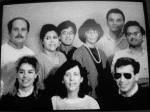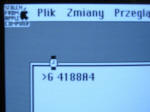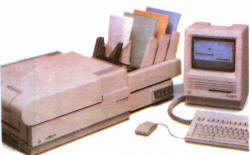Macintosh SE
SE stands for "System Expansion", not like in Windows, "Second Edition". Macs SE had many inprovements over Plus. First, it had internal SCSI bus and some models were sold with internal hard drive (20MB or 40MB) or with second floppy drive. SE had a special expansion bus inside allowing to use better CPU or bigger RAM. More, Apple added ADB - an universal keyboard/mouse bus which became standard for all early Macs.
| Model No: | M5010 | |
| Year: | 1988 | |
| Discontinued: | 1990 | |
| CPU: | Motorola 68000 8MHz | |
| RAM: | 4MB | |
| Max. RAM: | 4MB | |
| RAM Type: | 30-pin SIMMs | |
| Hard disk: | 20MB SCSI, 3.5" FH | |
| Floppy drives: | 1 1.4MB 3.5" | |
| Other drives: | None | |
| Graphics: | 512x342 monochrome | |
| Sound: | 1 8-bit/22kHz speaker | |
| Display: | Built-in 9" CRT | |
| Dedicated OS: | Mac System 3.3 | |
| Maximum OS: | Mac System 7.5.5 | |
| Expansions: | ADB, internal expansion connector. | |
|
Peripherals in collection: |
||
| Connectors: | - 2 ADB
connectors for keyboard and mouse - External floppy connector - External SCSI connector - 2 RS-422 serial ports (for printer and modem) - Mono Jack sound output. |
|
The story of this computer is long and strange. Outside, the
only trace of its source is a solid metal plate which was glued to the
front of computer, with German text saying that it's a gift from Humboldt
Foundation. More can be read from inventory numbers, hard drive data scraps, filesystem and software used.
After buying by Humboldt Foundation, it was upgraded to 4MB of RAM and Miniscribe 20MB SCSI Winchester hard drive, which replaced one of two floppy drives. They also changed floppy drive to 1.4MB version. In Poland it was used in some University (?Physics? Maths? - as I suspect from the software on its hard drive, as documents were deleted), probably somewhere near Warsaw, as there were conversion tools for character encoding standards popular there. It was used much, especially for text editing in WriteNow and TeX, as the most frequently used application is a text and formula editor.
Somewhere around 1992 the owner had changed, Mac was probably given to retired worker or something like this. It was used at home as a typewriter and... a musical instrument, which played songs from notes using software. It was playing to 1993 or 1994, when was finally turned off for next 15 years. As I remember I found this unit in recycling plant, in a big dump of electronic garbage received by supermarkets for discounts in new computers.
Interesting facts...
| Another "easter egg" comes with System 6 - if you click version number in Chooser. It reads "By Scott Douglas, fjs, & jhl" | 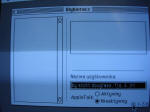 |
There were many peripherals for it. SE was known from its laser printers support, but paper had to be loaded manually. Some third-party companies sold a special feeder to SE's laser printer (source: Bajtek, 1991):





